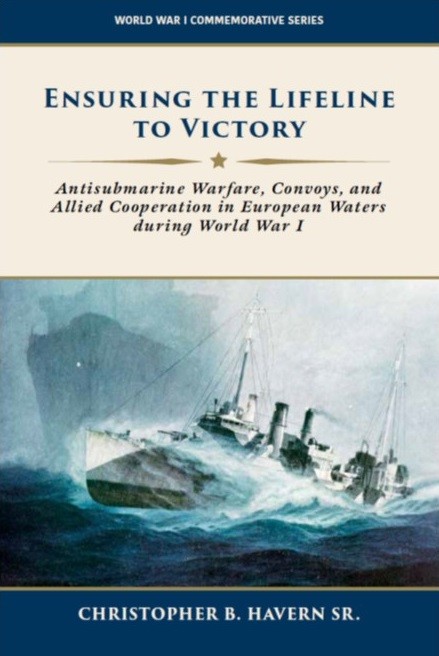Ensuring the Lifeline to Victory: Antisubmarine Warfare, Convoys, and Allied Cooperation in European Waters During World War I
Christopher B. Havern Sr., 2020, ISBN 978-1-943604-62-3
Available for free in the following format: 508-compliant PDF (1.8 MB)
In January 1917, relying on a flawed calculus, German planners staked all in the belief that U-boats (Unterseeboote) could force Britain into submission within six months and put a stop to a war, two and a half years old, that had already cost millions of lives. Instead of producing peace and the ultimate triumph, however, Germany’s resumption of unrestricted submarine warfare (USW) set off a chain reaction that ended in defeat and revolution.
The resumption of USW, though initially successful in threatening Britain, ultimately goaded the United States into declaring war. The influx of U.S. Navy destroyers and other patrol craft allowed the Allies to revive the traditional practice of escorting troop transports and merchantmen with warships—convoying—to ensure the transport of masses of matériel and more than 2 million troops to the Continent.
Although many historians generally understand World War I to have hinged on the colossal land battles on the Western Front, the outcome of those battles depended on the ability of the Allies to sustain transport and supply, especially across the Atlantic. It was in the safeguarding of these supply lines, in no insignificant part by the U.S. Navy, that the war was ultimately won



